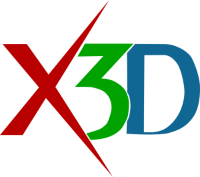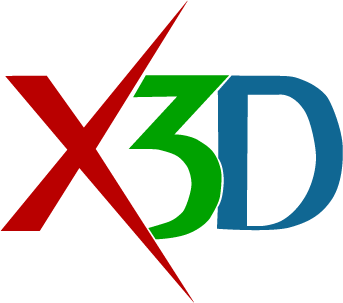About X3D
X3D is developed and maintained by Web3D Consortium
Extensible 3D (X3D) Graphics is a product of Web3d Consortium. A royalty-free open standard for publishing, viewing, printing and archiving interactive 3D models on the Web.
- X3D is an ISO-ratified, file format and run-time architecture to represent and communicate 3D scenes and objects for the Web.
- X3D fully represents 3-dimensional data.
- X3D is developed and maintained by the Web3D Consortium.
- X3D has evolved from its beginnings as the Virtual Reality Modeling Language (VRML) to the considerably more mature and refined ISO X3D standard.
- X3D provides a system for the storage, retrieval and playback of real time 3D scenes in multiple applications, all within an open architecture to support a wide array of domains and user scenarios.
X3D has a rich set of componentized features that can be tailored for use in engineering and scientific visualization, CAD and architecture, Geospatial, Human animation, 3D printing and 3D Scanning, AR/MR/VR. Today X3D has several applications in medical visualization, training and simulation, multimedia, entertainment, education, and more.
As an open standard X3D can run on many platforms, but importantly can render 3D models in most web browsers without the requirement for additional or proprietary applications. Further, once models are developed utilizing X3D, these easily port to alternative platforms like holographic, head-mounted or other display devices.
X3D is 3rd-generation VRML. X3D is a direct superset of VRML with four encodings: XML encoding .x3d, Classic VRML encoding .x3dv, VRML97 encoding .wrl and JavaScript Object Notation (JSON). Programming language bindings are available for JavaScript and Java, with work in progress on C++/C# and Python. X3D is designed so that all of these forms are functionally equivalent, you can choose to use any of them.

